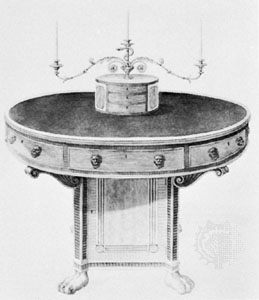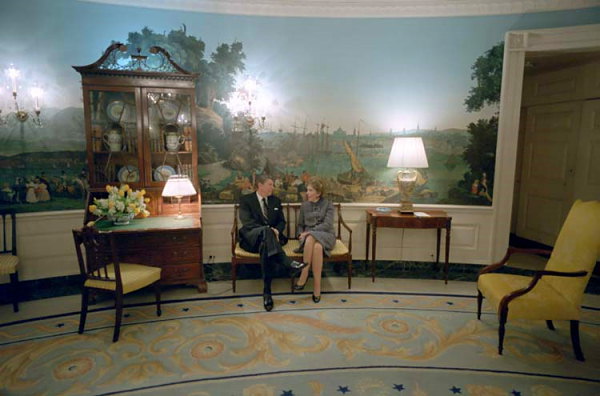The Federal Style: American Neoclassicism, 1780-1820
Sep 7th 2017

Classicism was introduced to America only gradually. The Chippendale style persisted into the 1790s, though it began to be often seen in combination with classical decorative motifs as well. The architectural term Federal is often used to denote this period in American Furniture. Pieces in this style are characterized by their sharply geometric forms, legs that are usually straight rather than curved, contrasting veneers, and geometric inlay patterns on otherwise flat surfaces. Pictorial motifs usually reference the new federal government with symbols such as the eagle.
Two English furniture designers/cabinetmakers are credited with bringing Federal style furniture to America. George Hepplewhite’s 1788 book The Cabinet-Maker and Upholsterer’s Guide and Thomas Sheraton’s The Cabinet-Maker and Upholsterer's Drawing Book are considered to be landmark books of the Federal furniture movement and responsible for introducing the style to a wider American audience (for this reason, Federal furniture is sometimes referred to as Hepplewhite and Sheraton style).
The lightness and clean lines of the Federal style was an antidote to Chippendale furniture, which had become increasingly massive and heavily carved. Neoclassical furniture makers mainly used highly figured veneers and contrasting woods and inlays in simple geometric patterns for ornamentation. When carvings do appear, they are smaller scale and generally shallower in relief than in Chippendale pieces.
Cherry and Walnut

Dark woods were popular at this time. In Europe, mahogany was the most popular, but many American furniture manufacturers used cherry, which is just as beautiful. Walnut stained to a deep red with potassium chloride was also used by some cabinetmakers as a slightly less expensive option. Intricate workmanship is typical of Federal furniture, and many pieces featured inlays of different types of wood, or of wood scorched to give areas of light and dark contrasts. Painted or string inlays were also used for decoration. Stars and eagles, the symbols of the new nation, are often seen in American furniture instead of the classical emblems of European furniture of this era. This is especially true of the later part of this period.
New Furniture Forms
With the introduction of the Federal style of furniture, the dressing table and high chest disappeared. The most important new form to develop was the sideboard. There were several variations and could be found with square legs and a recessed center section or another with a kidney-shaped top and rounded ends. In the South, the huntboard developed as a regional variation of the Sideboard.
The sectional dining table became a well-known Federal form, as did the dressing table with an attached looking glass. In Federal furniture from Charleston, South Carolina, a distinct type of “rice carving” is seen, resembling the ripe grain of the rice plant that is grown in that region.

Baltimore and Annapolis
In the years immediately following the Revolution, Baltimore became an important port, and a school of cabinetmaking flourished there during the Federal period. Elaborate pieces of painted furniture made the Baltimore pieces’ sophistication and grace hard to match. In addition to the painted furniture, Baltimore was known for its use of eglomise (glass panels with symbolic figures) and large ovals inlaid in mitered panels.
Like Baltimore, Annapolis also became an important cabinetmaking center. The most prominent craftsman was John Shaw. A labeled mahogany bookcase-desk by John Shaw was made in 1797 and formerly stood in the Kennedy Green Room in the White House. It is now shown in the Diplomatic Reception Room. The Maryland State House holds a desk for the President of the Senate made by John Shaw in the same year.
Elegant and Graceful
The Federal era in American furniture produced some of the most elegant, graceful, and truly beautiful antique furniture in existence. During the years when George Washington crafted a nation, contemporary cabinet makers crafted a tradition in fine furniture that endures today.
References:
- Field Guide to American Antique Furniture by Joseph T. Butler © 1985 Joseph T. Butler and Roundtable Press, Inc.
- http://en.wikipedia.org/wiki/Federal_furniture
- http://www.furniturestyles.net/american/antique/federal.html
- http://www.msa.md.gov/msa/speccol/sc1500/sc1545/e_catalog_2002?0749research.html
- http://www.ralstonfurniture.com/federal.html

